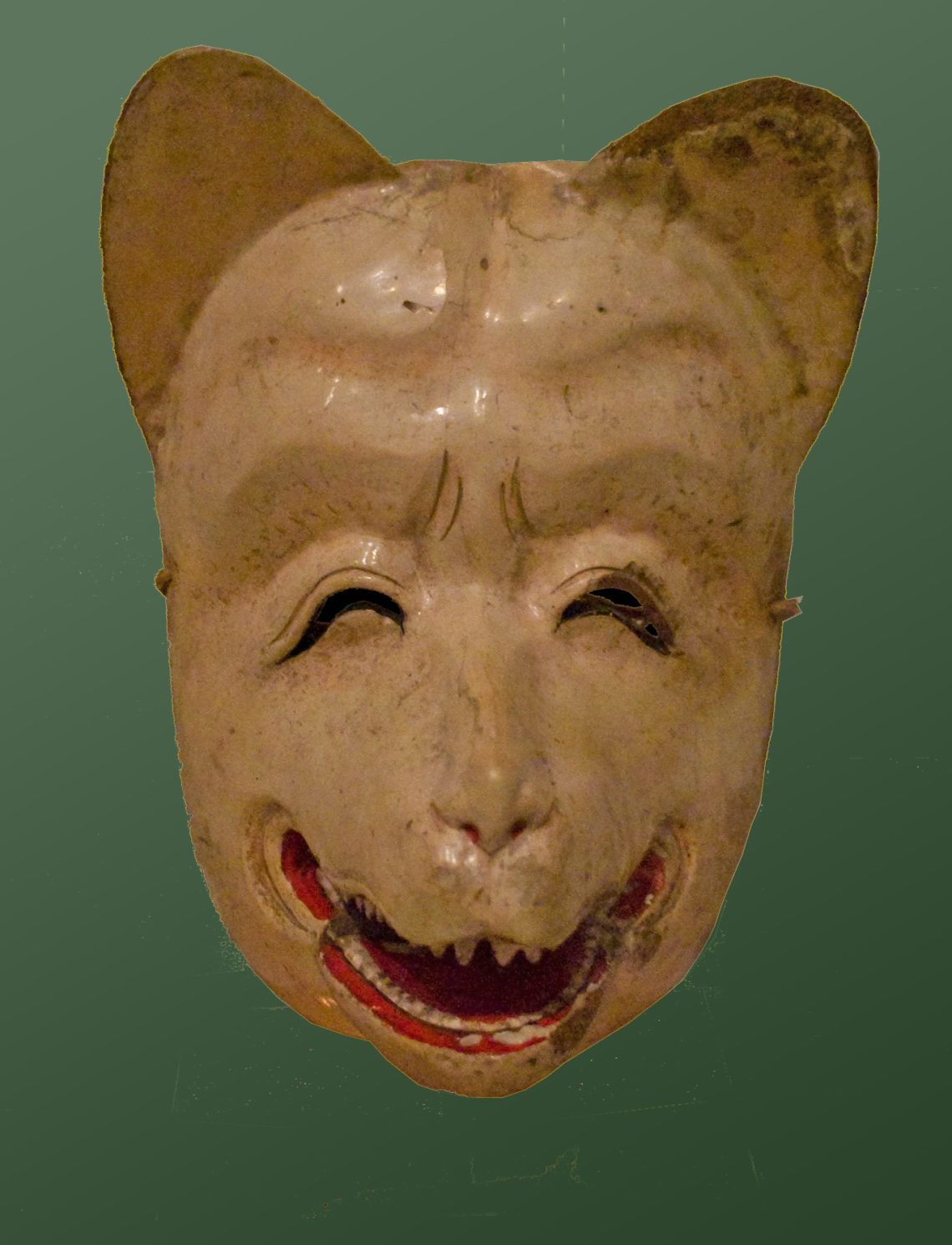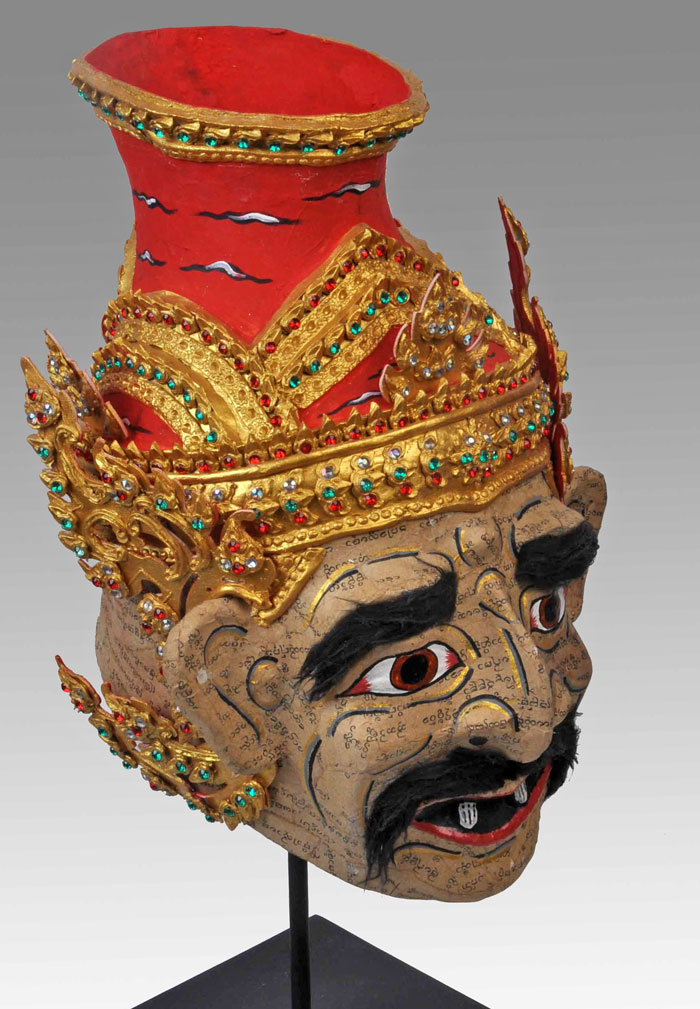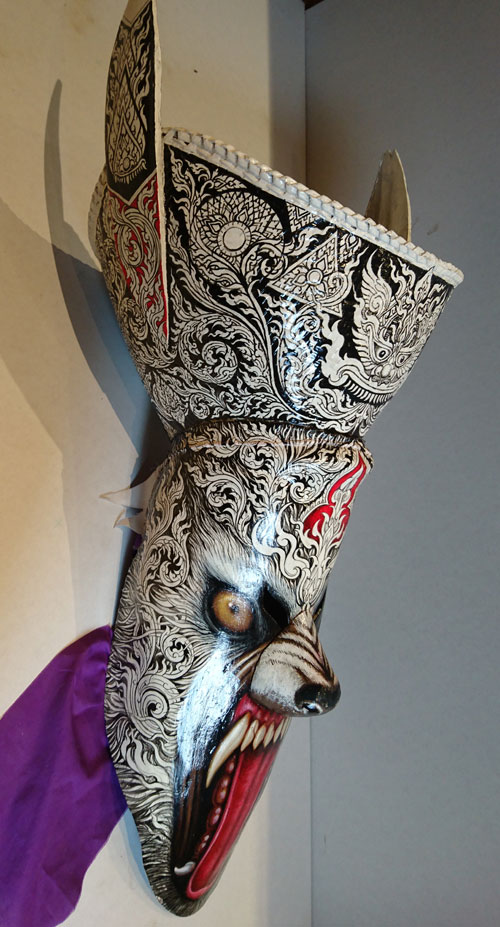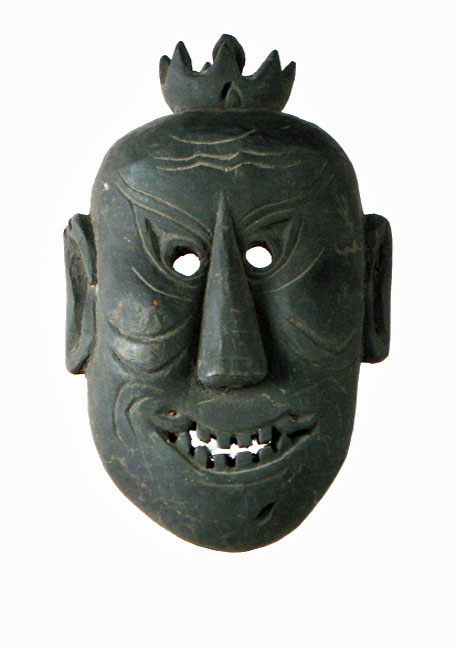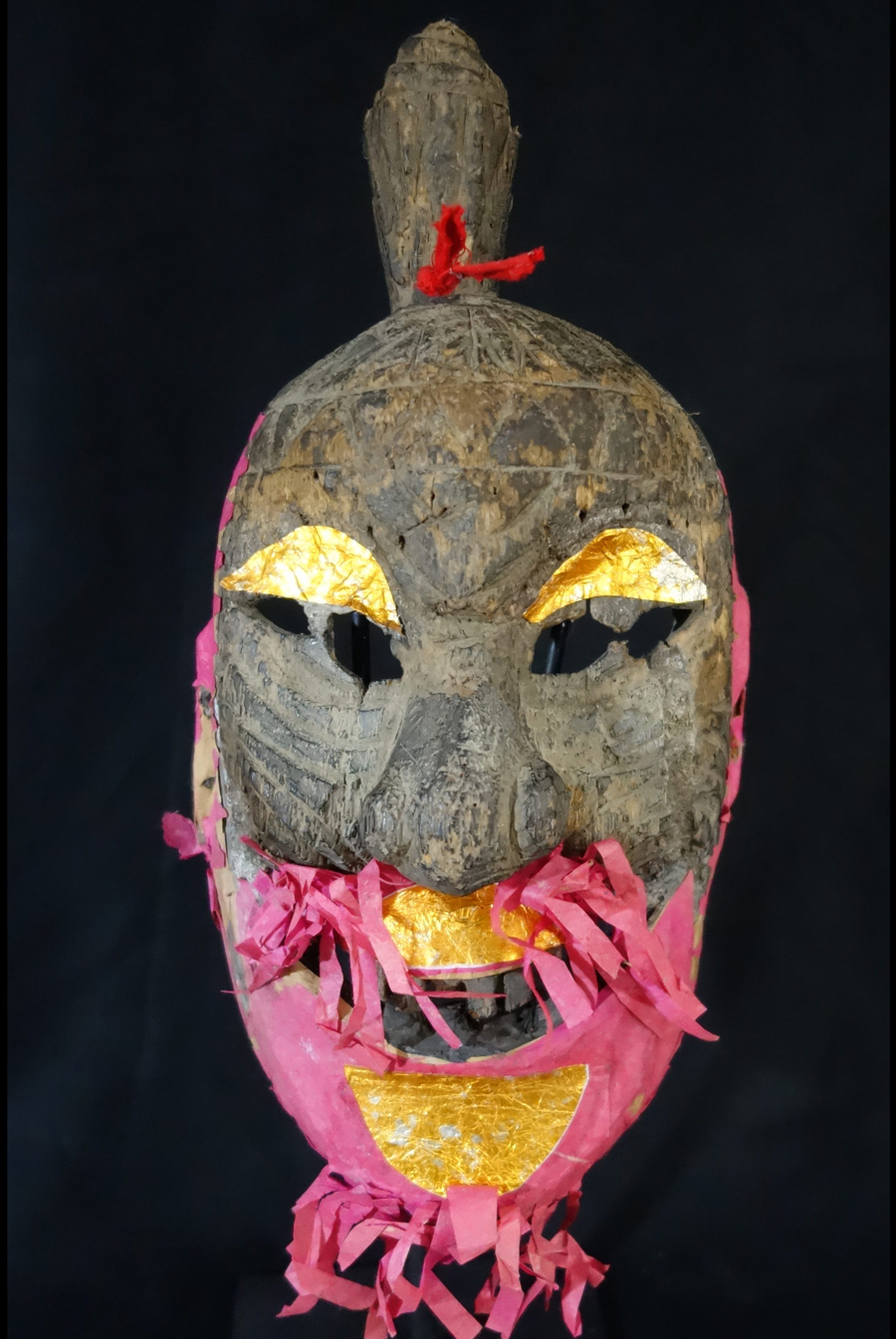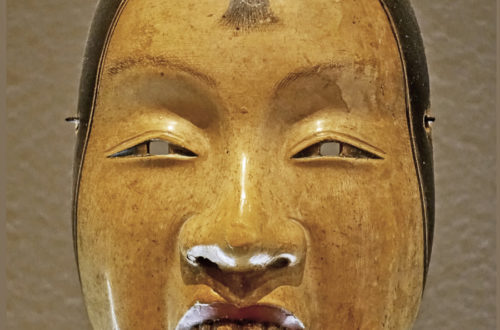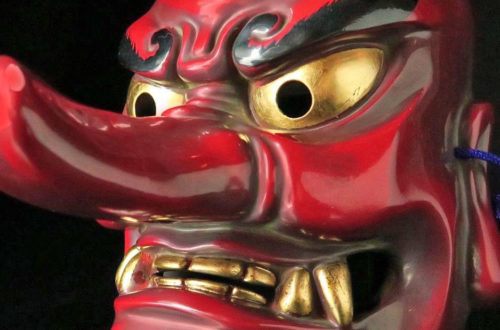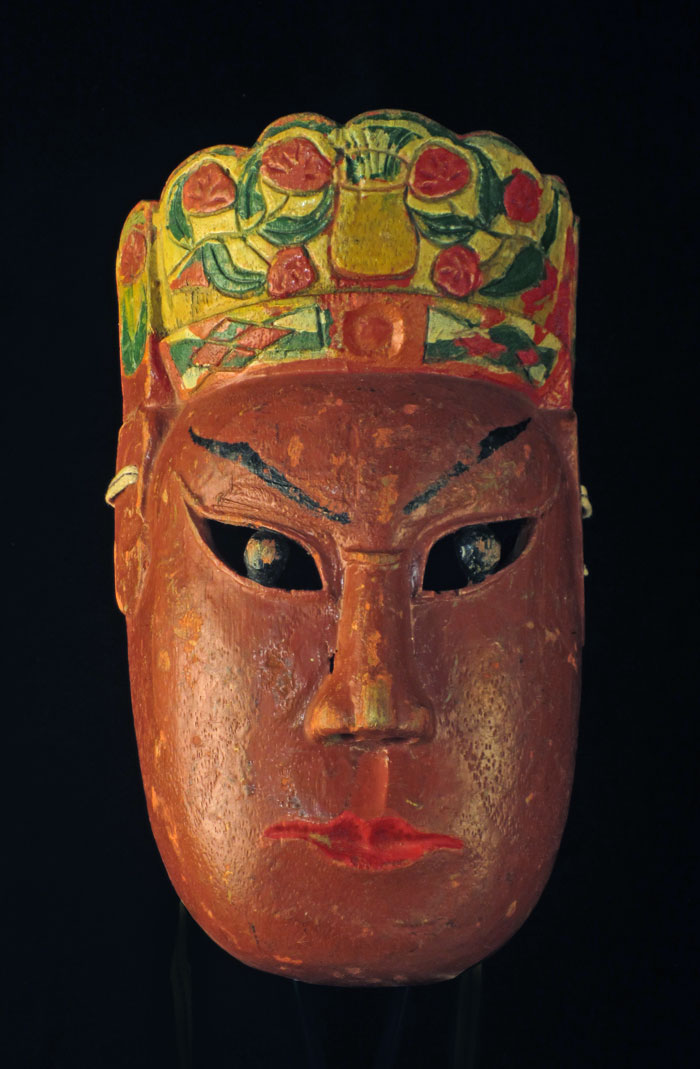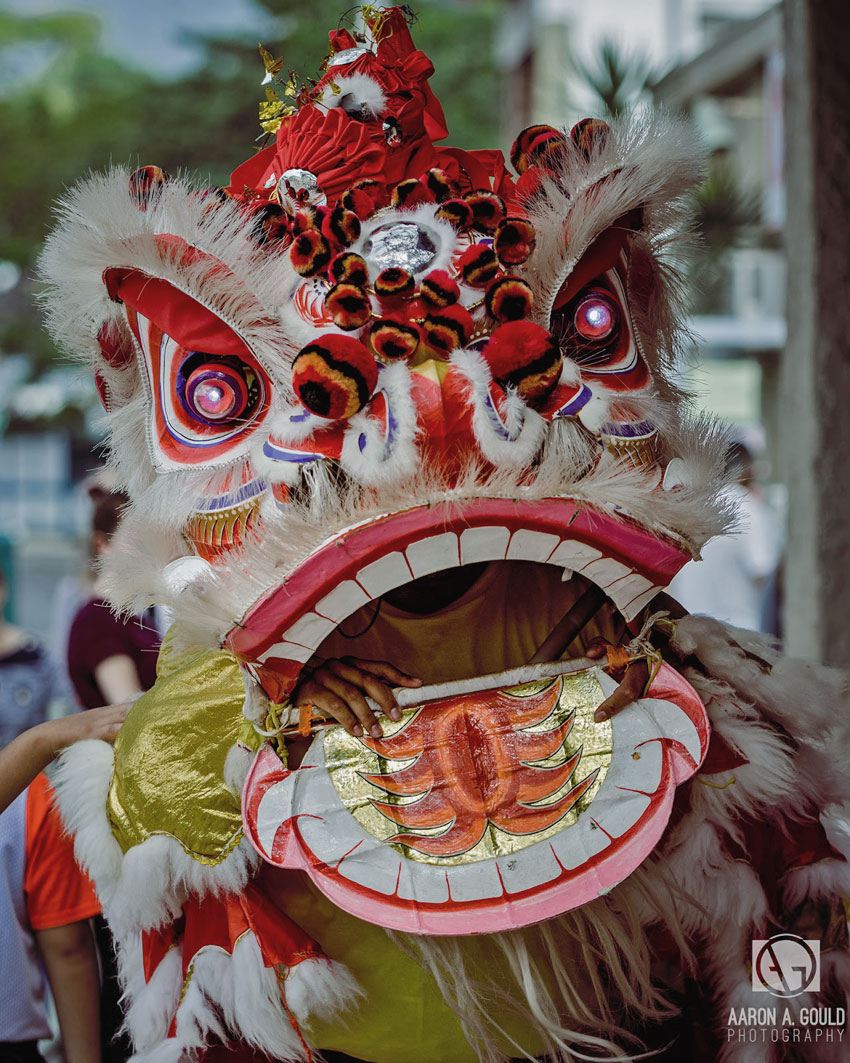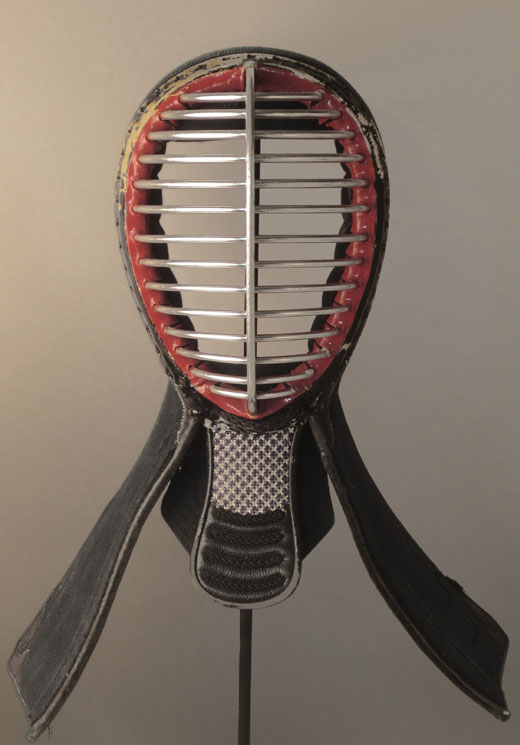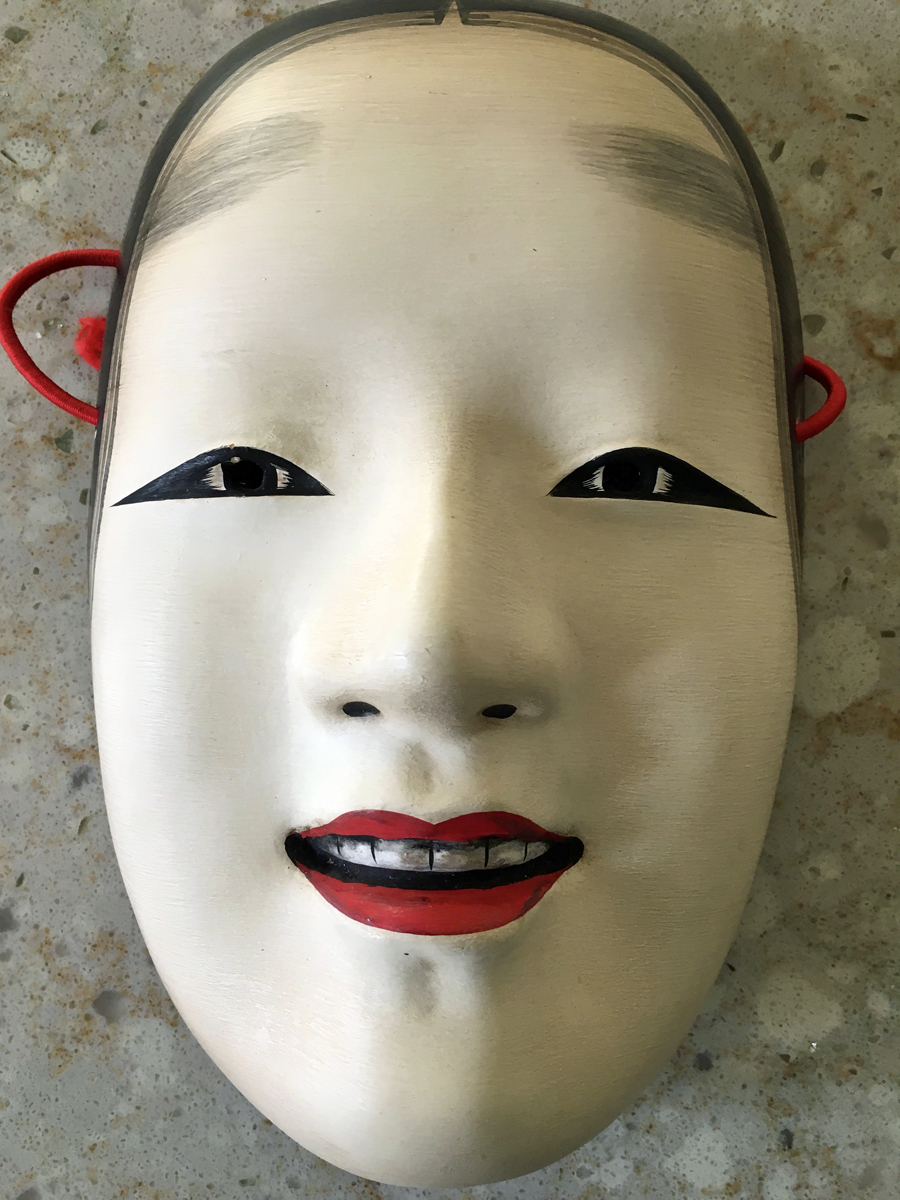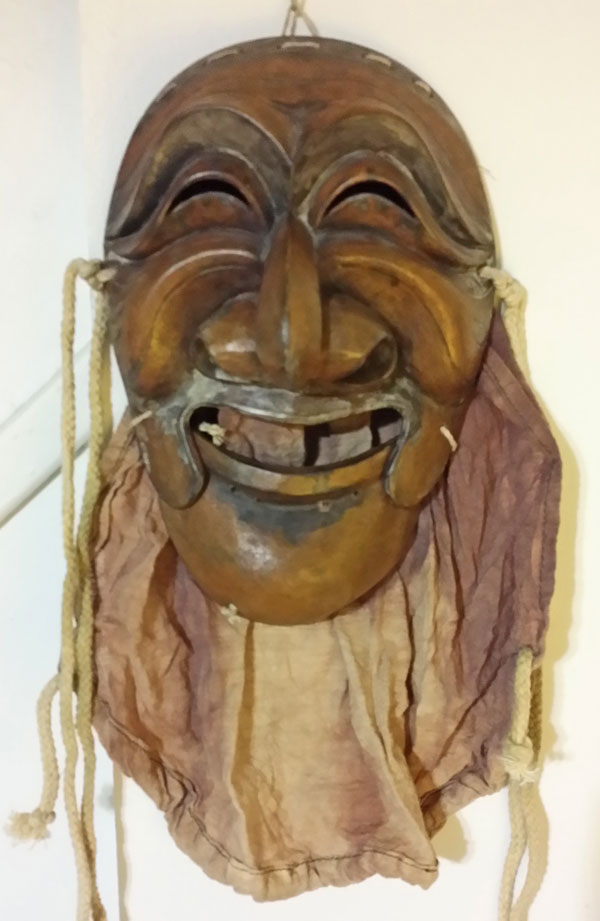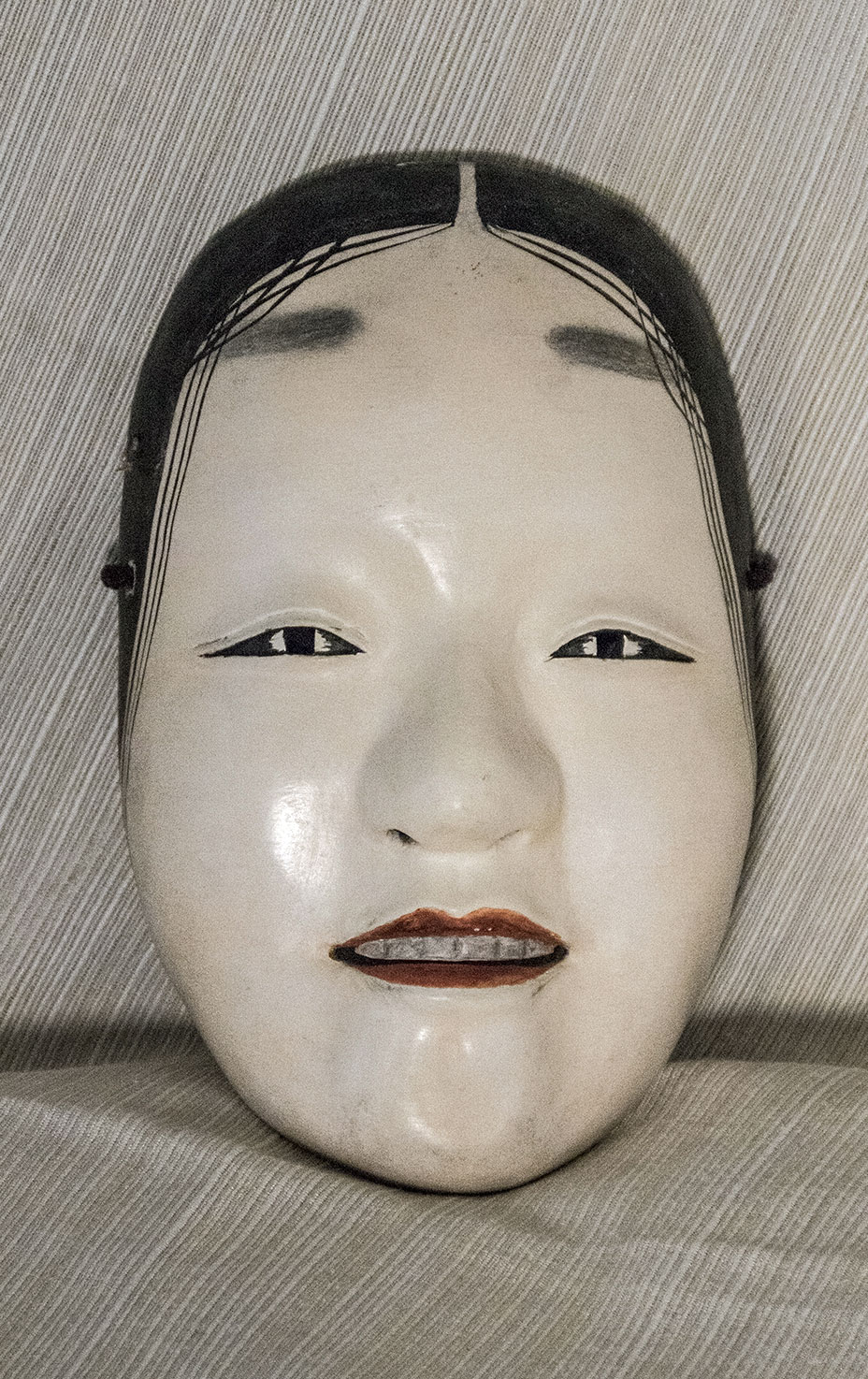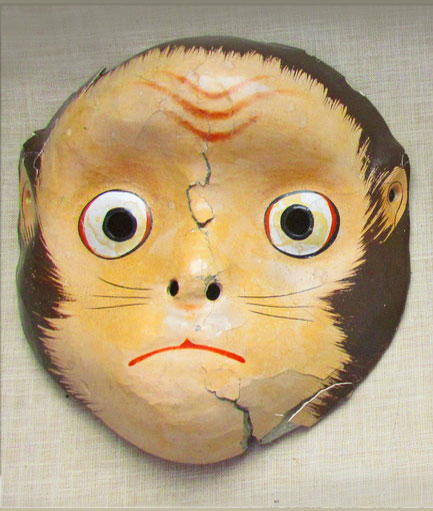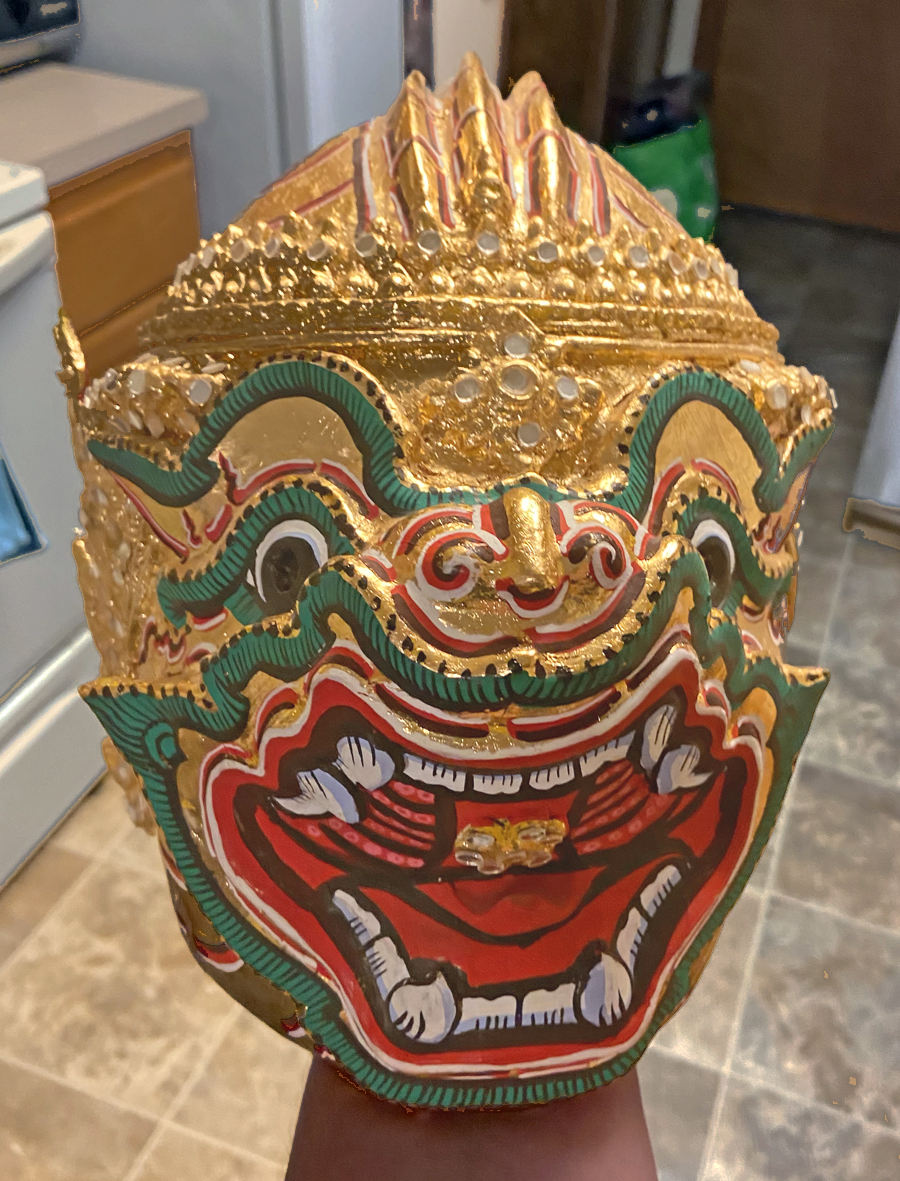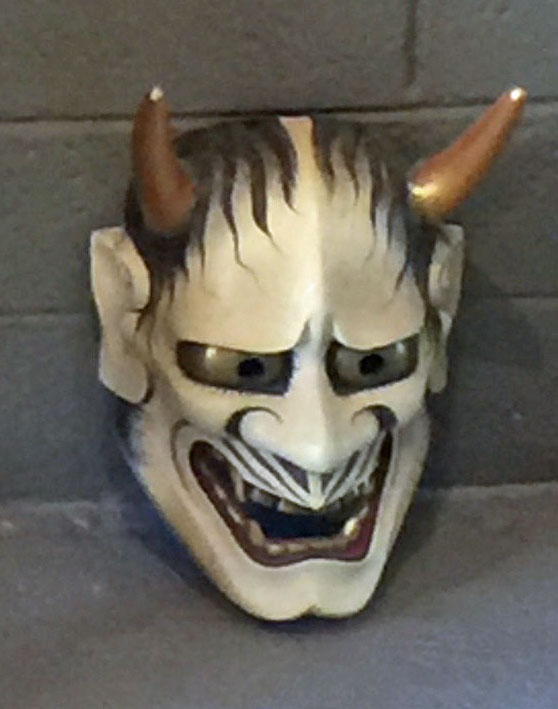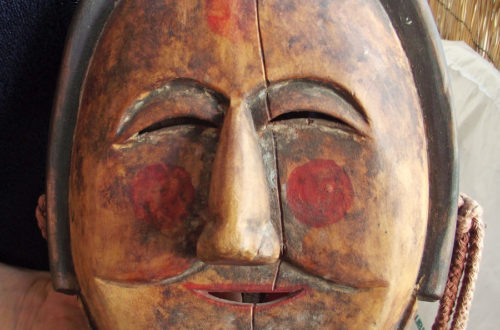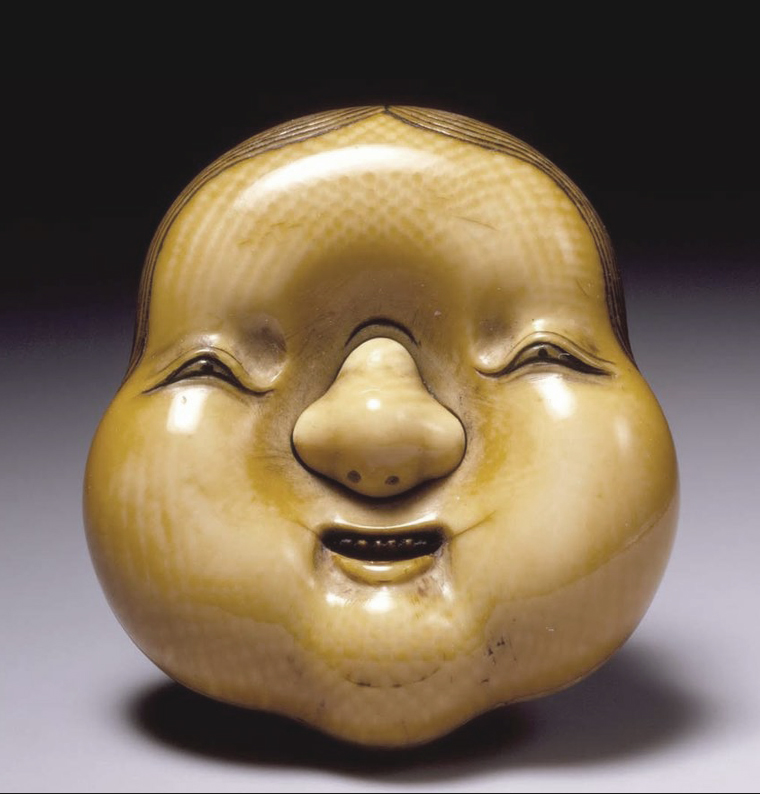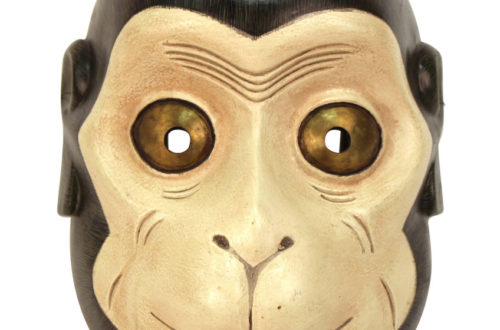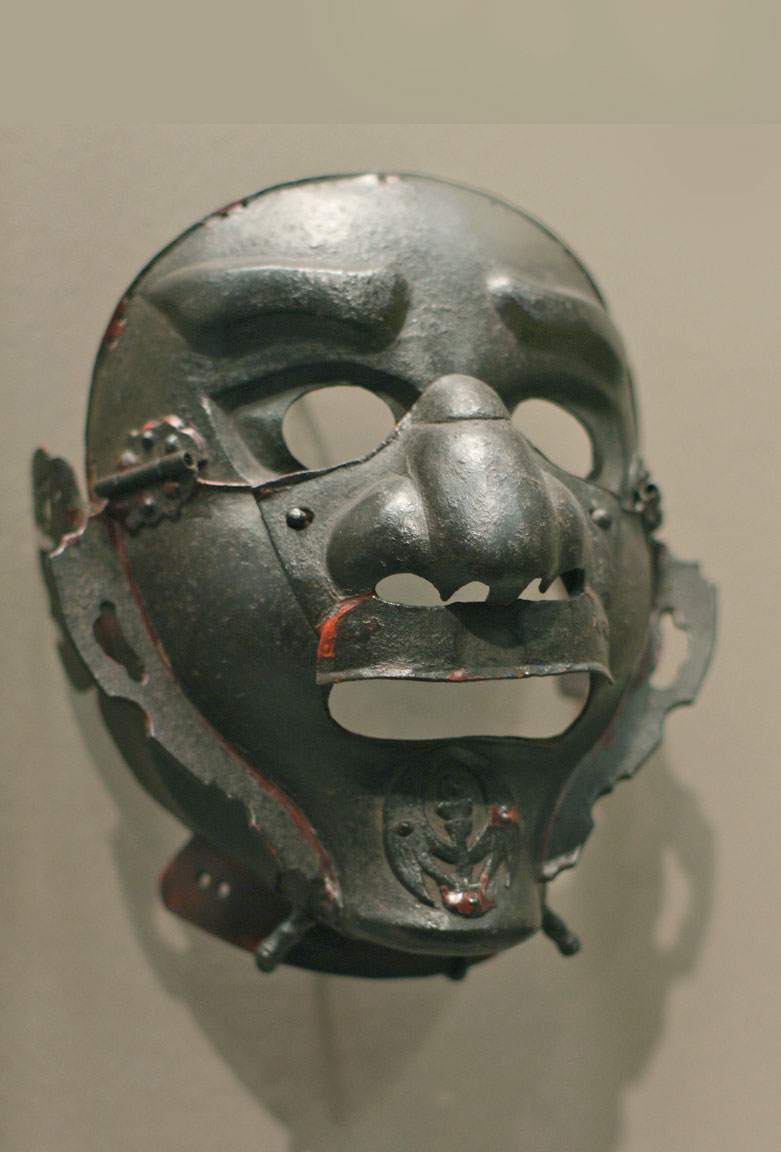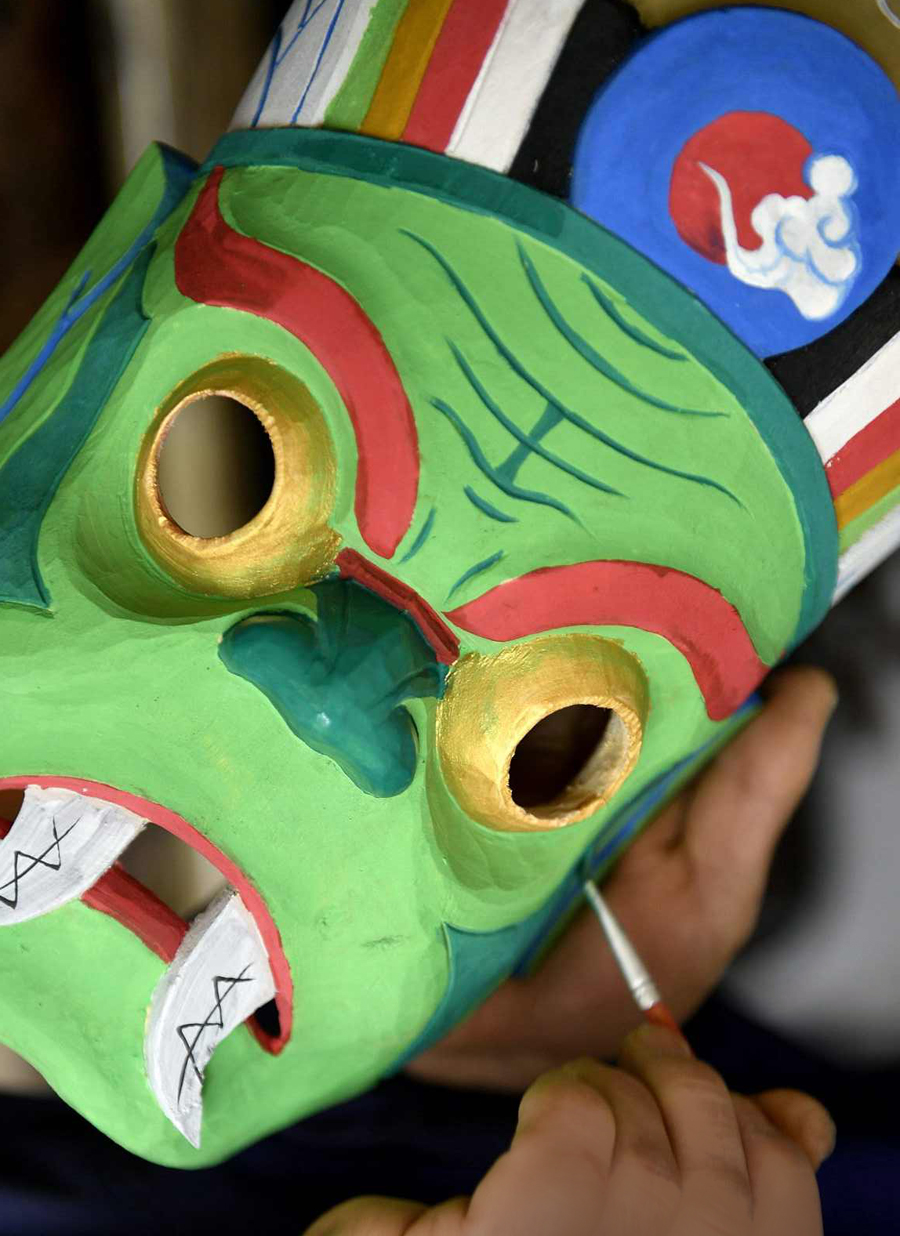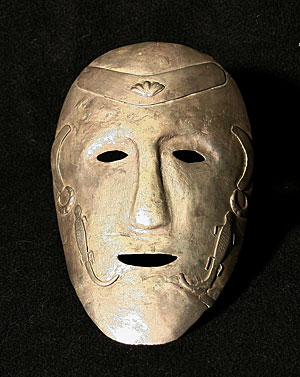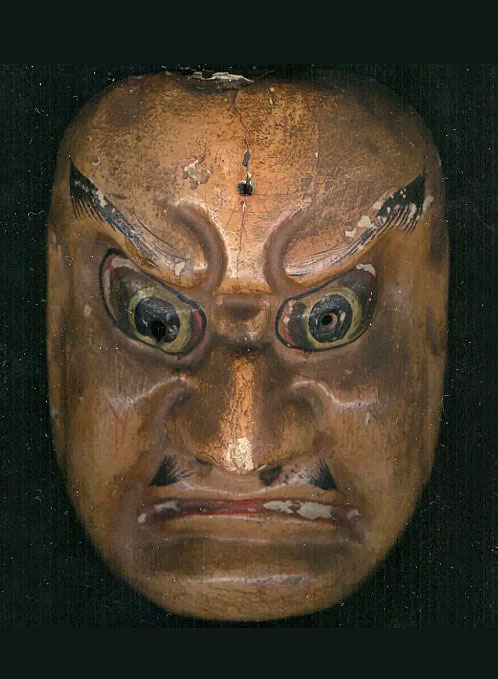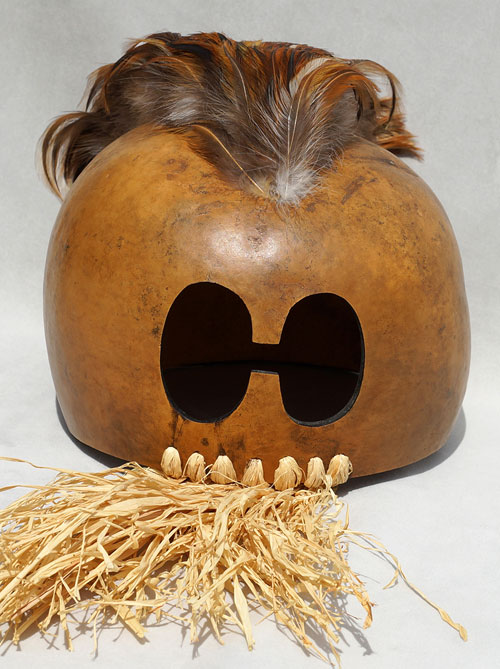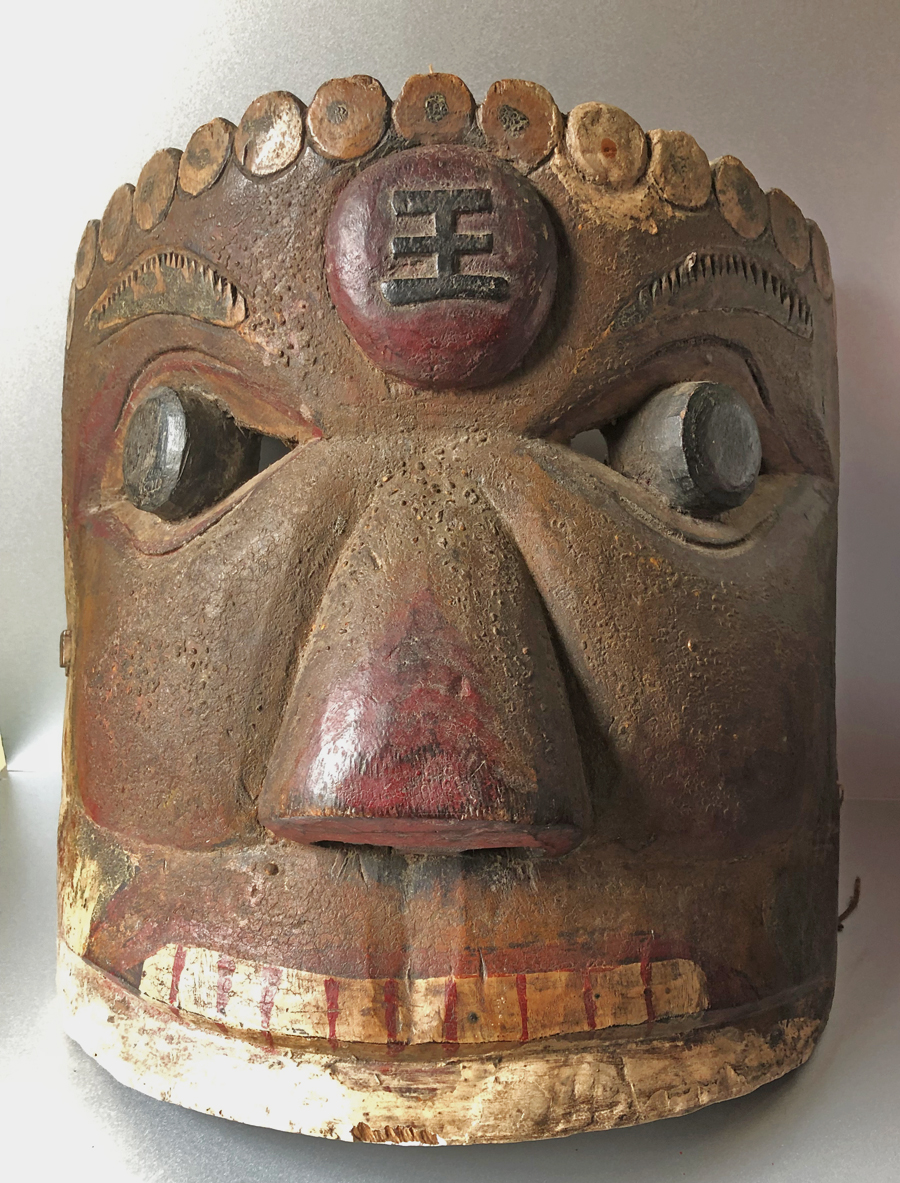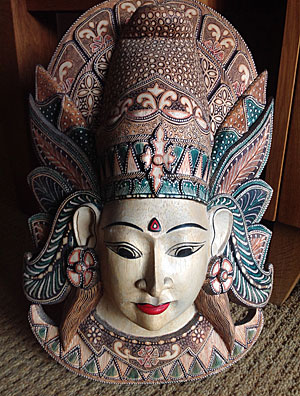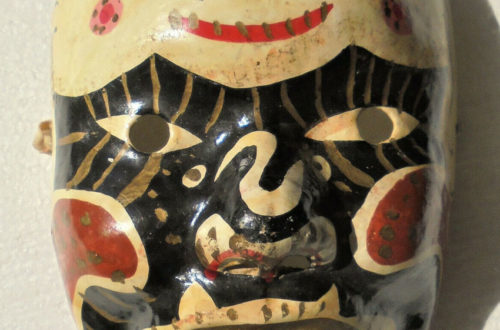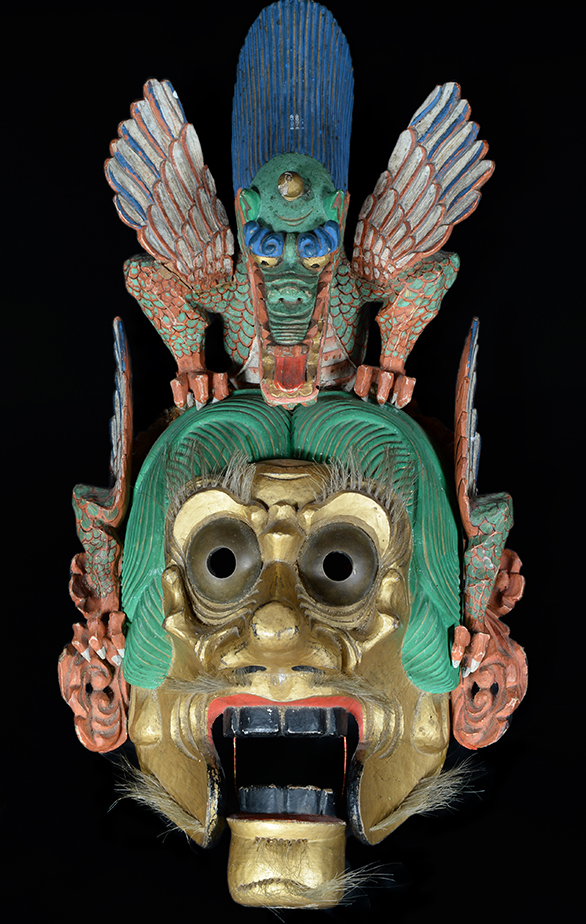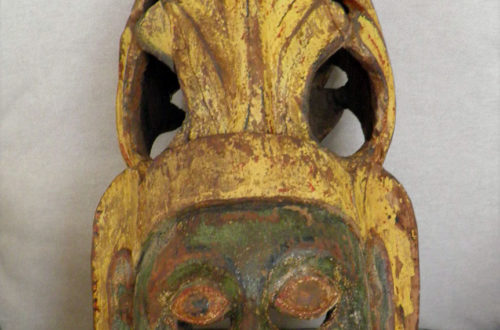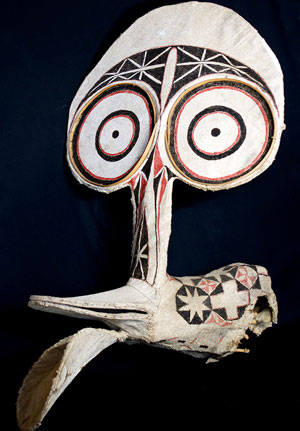Kitsune is a mask of a fox. It has meaning in religion and folk tradition. In Japanese culture foxes have a contradictory behavior. They can be good or evil, depending on the situation. Some of the Japanese Kitsune can be used for Noh, Kyōgen, Shinto and Kagura performances. Noh is classical Japanese musical drama based on tales from traditional literature performed since the 14th century. Kyōgen is a form of traditional Japanese comic performance in the theater. It was performed as an intermission between Noh acts. Shinto is an ethnic religion in Japan, and it focuses on ritual practices. Kagura is a type of Shinto theatrical dance. The first Kitsune…
-
-
Tribal masks of Vietnam
The Kim Mun Lanten people of northern Vietnam and Laos traditionally follow a Daoist doctrine which overlays beliefs in animism (being affected by outside “spirits”) and ancestor worship. The masks are worn by shaman during ceremonies to impersonate deities who help one’s own spirits adhere more strongly to the self. Thus, a mask may be used by a shaman to strengthen someone who is going on or coming back from a hunting or trade expedition. The masks are decorated with bright paper at each usage, and often an older mask will have vestiges of paper from its last village ceremony. Some masks are carved from soft wood – often these…
-
Large, long-nosed Tengu mask
Q: This large mask is Ht 19″; Depth back to nose tip 17″; and Width 12″. Clear & blue glass inserts. Appears to be wood or hard surface with top layer of cloth or paper or bark. Holes at bottom of nose and eyes. Bought 10 years ago from airline attendant. Do not remember what I paid for it. She got it during her South Pacific travels. Mindi, 1784 A: The Tengu mask is seen with a red face and an unusually large or long nose. Early depictions of Tengu in Japan show them as kite-like beings who can take a human-like form, often retaining wings, head or beak. The…
-
Traditional Japanese Noh mask
Q: I want to sell this Noh mask. Could you give me some idea of its value? Sharon, 1775 A: If you want retail, wholesale and insurance values, plus marketing advice, your will have to pay for an appraisal. What you are getting now is a B- grade… at no charge! Your attractive piece is a typical male character from a Noh theater play. However, it has been hastily made for sale to Japanese homemakers or foreign tourists. How do we know that? If you enlarge the front scan you can see that the painted details are sloppy. But on the wall it is well enough made to look professional.…
-
Thai Hanneman mask
Q: I recently inherited a Thailand papier-mâché Hanneman gold painted mask. I’ve seen a few on here. It’s vintage and I was just wondering the worth. Michelle, 1751 A: These “Mystery Mask” blogs help to determine the worth of your mask with an ABCD-grade. This is a not real appraisal, which always requires a fee for dollar-value research and marketing suggestions. Your Hanneman is well made with especially strong papier-mache and good painting for long usage in traditional dances… or the collections of people who can afford them. B+ No charge! IT’S FREE!
-
3 Japanese masks new to me
A friend sent me an article titled “10 Things You Might Not Know About Traditional Japanese Masks” by Lucy Dayman. She is an Australian-born, Japan-based journalist, copywriter and editor. It is an excellent article, but I new only seven of the masks. So here are the remaining three. I hope you enjoy them as much as I did. The cherub-faced Okame is the wife of Hyottoko, a cheerful lady who’s a symbol of good luck. Technically Okame goes under two names; Otafuku and Okame. Otafuku means good fortune while Okame means tortoise a Japanese symbol of a long life, so no matter which name you’re using she’s a positive sign…
-
Japan’s magnificent Noh masks
The Kasshiki-otoko noh mask you see here is from the Meiji period, an era of history which extended from 1868 to 1912. It is very carefully carved wood, painted, lacquered and polished several times. This beautiful piece can be found at the Montreal Museum of Fine Arts. The word Noh means talent, skill and craft in art performance. Noh is the oldest theater style played today. Noh is classical Japanese musical drama based on tales from traditional literature performed since the 14th century. In the story, supernatural creature transforms into human shape and tells the story. The actors tell a story through gestures and appearance in masks. They capture the…
-
Wuhan has masks also
Nowadays we think of Wuhan as birthplace of the Coronavirus. It is located in the central part of China and is known for hi-tech and other industries. Not so much for folk art. I searched the internet for masks from Hubei Province and its capital, Wuhan, and only could find this. It shows a carver finishing off a mask for the Nuo opera… or it could be for sale to tourists. Let’s hope we survive this worldwide pandemic. Bob
-
Chinese Nuo Opera mask
Q: I acquired this special mask some 20 years ago. Seems to have good wear and tear to me. It’s a quite big mask (h 32cm w 33cm). I think it’s an ancient opera mask. But I’m not sure. Maybe you know more about it. Patrick, 1691 A: I only know this about your mask. Nuo opera is popular in southern China. Characterized by its special features such as ferocious appearance, unique dresses and adornments, it is also linked to exorcism. The opera is a religious performance intrinsic to the culture of Nuoism, a type of Chinese folk religion. The purpose of Nuo opera is to drive away devils, disease…
-
Bugaku King Rangryo mask, Japan
Our great friend, Aron Fellmeth of Second Face Museum of Cultural Masks has this to say: Bugaku is an official court dance of Japan, dating back to about 500 C.E. During the Heian period, Bugaku dances were so central to protocol that nearly all ceremonies and festivals included them. The dance was especially important in appeasing angry gods, purifying the village, and petitioning the gods for rain or a good harvest. The dance is performed to the music of drums and flutes. The dancers enter the stage singly in succession, then dance together in pairs, in synchronicity to varying tempos. Each dance has its own mask and is named after…
